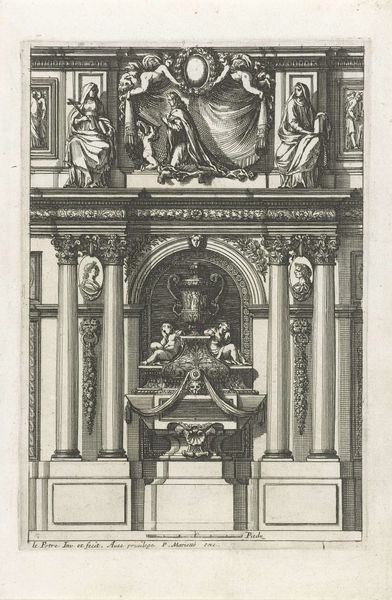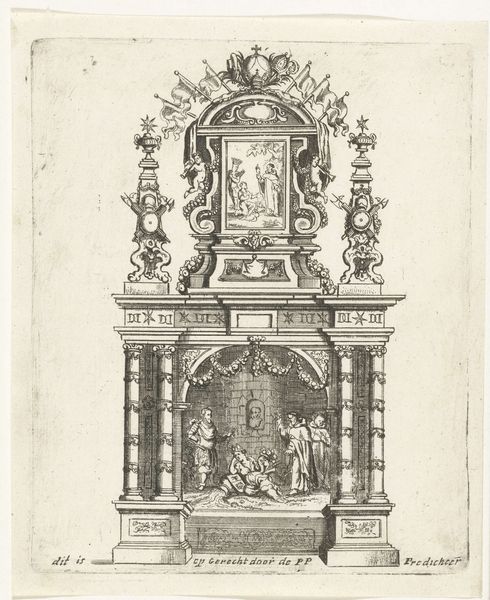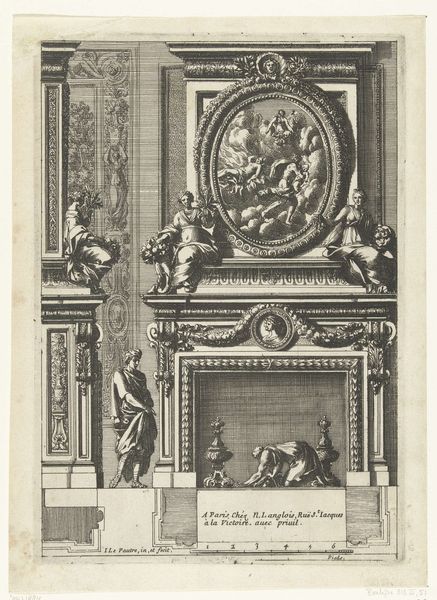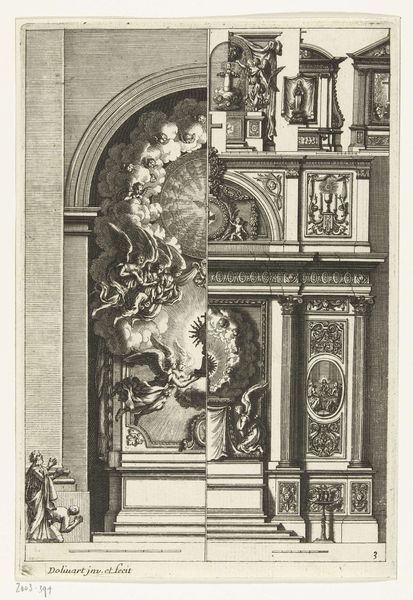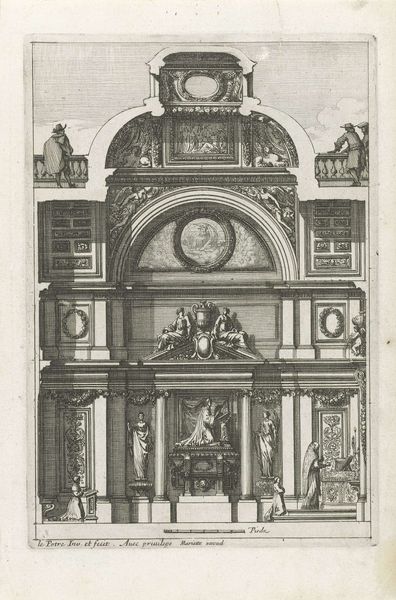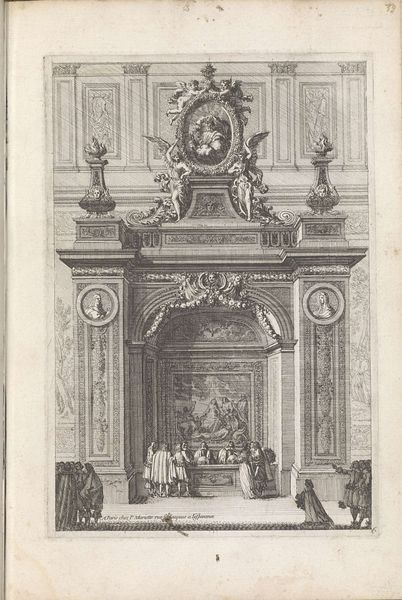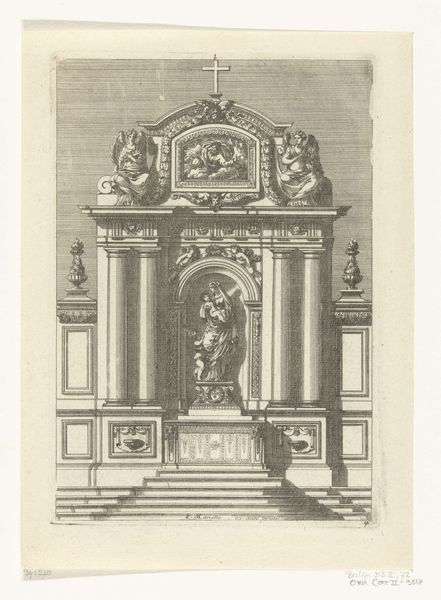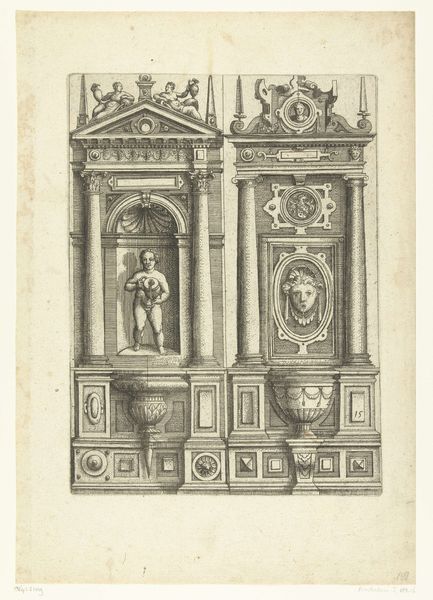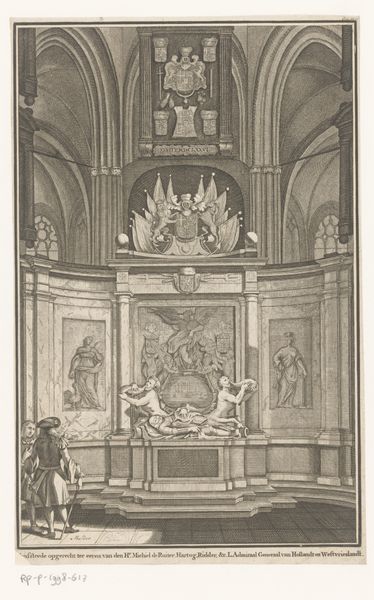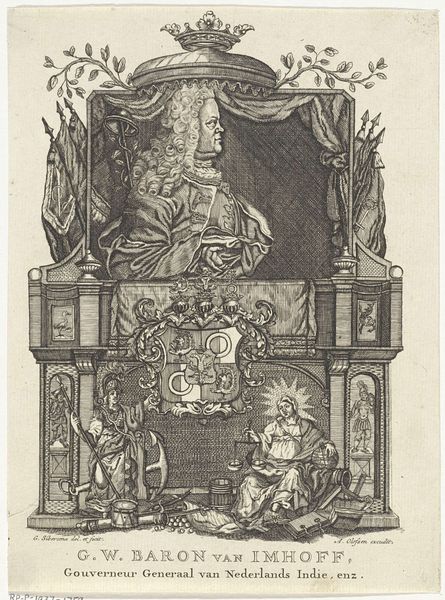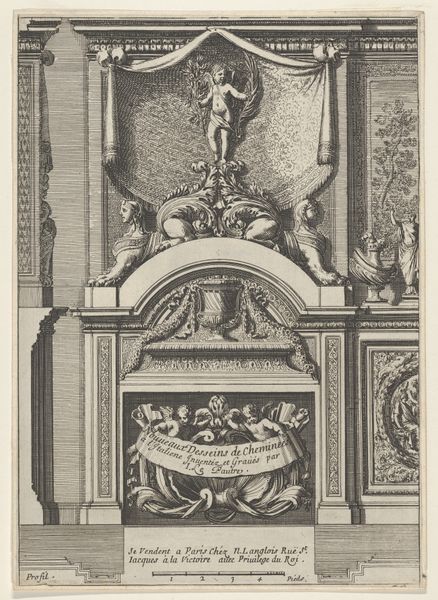
engraving
#
baroque
#
old engraving style
#
perspective
#
figuration
#
pen-ink sketch
#
line
#
genre-painting
#
history-painting
#
engraving
Dimensions: height 229 mm, width 154 mm
Copyright: Rijks Museum: Open Domain
This print of a chapel scene was made by an anonymous artist using the technique of etching. The process involves drawing an image into a prepared ground on a metal plate, which is then bitten by acid, and finally printed. The dense network of lines you see here would have taken considerable time and skill to execute. Etching allowed for the relatively quick reproduction of images in multiples, and the wide dissemination of ideas, long before photography. Notice how the artist has used line to suggest the different textures of the chapel, from the smooth marble columns to the ornate carvings and heavy drapes. The varying density of the lines creates a sense of light and shadow, adding depth to the composition. The artist has created a whole world, using the simplest of means: line, acid and metal. It’s a powerful reminder that the most compelling art often comes from the humblest of materials and the most dedicated of processes.
Comments
No comments
Be the first to comment and join the conversation on the ultimate creative platform.

